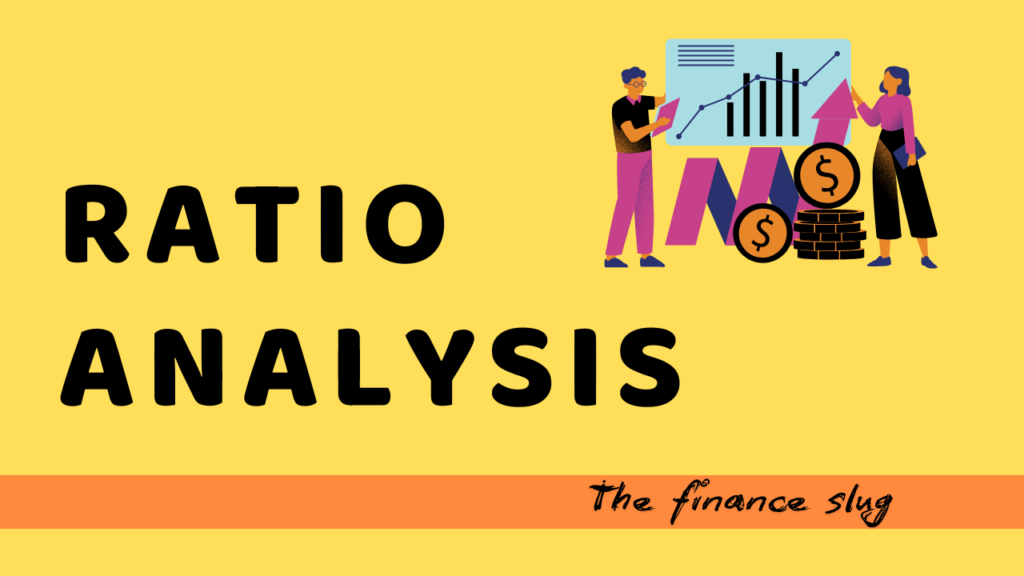
Ratio analysis is a method used to understand a company’s financial health by examining key figures from its financial statements, such as the balance sheet, income statement, and cash flow statement. By calculating and interpreting various ratios, businesses and stakeholders can get insights into how well a company is performing in different areas, such as profitability, efficiency, liquidity, and solvency.
This process simplifies complex financial data into easily understandable numbers, helping to answer important questions like:
- Is the company making enough profit?
- Can it meet its short-term and long-term obligations?
- Is it using its resources efficiently?
Ratio analysis is widely used by business owners, investors, lenders, and analysts to make informed decisions. For example, investors use it to decide if they should buy or sell stocks, while lenders rely on it to assess whether a company is a safe bet for loans.
Additionally, ratio analysis plays a crucial role in comparing a company’s performance with industry peers, identifying trends over time, and spotting potential financial risks early. It is a versatile tool that provides valuable insights for both small businesses and large corporations.
Types of Ratios in Ratio Analysis
Ratio analysis uses different types of ratios to study specific areas of a company’s performance. Let’s look at the main types:
1. Liquidity Ratios
These ratios measure if a company can pay its short-term debts.
- Current Ratio:
This ratio shows how easily a company can use its assets (like cash) to pay its liabilities (like bills).
Formula: Current Assets ÷ Current Liabilities For example, if a company has a current ratio of 2, it means it has twice as many assets as liabilities. - Quick Ratio (Acid-Test Ratio):
This is similar to the current ratio but doesn’t include inventory. It’s useful for companies that don’t sell products quickly.
Formula: (Current Assets – Inventory) ÷ Current Liabilities
2. Profitability Ratios
These ratios show how much profit a company makes compared to its sales or assets. Understanding various business expenses, like taxes, can also affect profitability ratios.
- Gross Profit Margin:
This ratio shows how much profit is left after paying for the cost of making products.
Formula: (Gross Profit ÷ Revenue) × 100 For example, if the gross profit margin is 50%, it means the company keeps 50 cents for every dollar of sales. - Net Profit Margin:
This ratio tells how much profit is left after all expenses, including taxes and interest, are paid.
Formula: (Net Profit ÷ Revenue) × 100
3. Efficiency Ratios
These ratios show how well a company uses its resources like inventory or money owed by customers.
- Inventory Turnover Ratio:
This ratio measures how quickly a company sells its products. A high ratio means products are selling fast.
Formula: Cost of Goods Sold ÷ Average Inventory - Receivables Turnover Ratio:
This ratio shows how fast a company collects payments from customers.
Formula: Net Credit Sales ÷ Average Accounts Receivable - Asset Turnover Ratio
The asset turnover ratio measures how efficiently a company uses its assets to generate sales. It is calculated using the formula.
Asset Turnover Ratio = Net Sales / Average Total Assets
4. Solvency Ratios
These ratios measure if a company can meet its long-term obligations.
- Debt-to-Equity Ratio:
This ratio compares the money borrowed (debt) to the money invested by owners (equity). A lower ratio is better because it shows less dependency on loans. Ratio analysis can help businesses evaluate how well they can manage debt and meet short-term financial obligations, similar to how credit is assessed for individuals and businesses
Formula: Total Debt ÷ Shareholders’ Equity - Interest Coverage Ratio:
This ratio shows if a company can pay the interest on its loans from its profits.
Formula: Earnings Before Interest and Taxes (EBIT) ÷ Interest Expense
5. Market Ratios
These ratios focus on how a company’s stock is performing in the market.
- Earnings Per Share (EPS):
This ratio shows how much profit is earned for each share of stock.
Formula: (Net Income – Preferred Dividends) ÷ Average Outstanding Shares - Price-to-Earnings Ratio (P/E):
This ratio compares the price of a stock to its earnings, showing if the stock is overvalued or undervalued.
Formula: Market Price Per Share ÷ Earnings Per Share (EPS)
Why Is Ratio Analysis Important?
Ratio analysis is a simple but powerful tool for understanding a company’s financial health and making better decisions. It helps businesses, investors, and lenders by turning complex financial data into clear, actionable insights. Here’s why it matters:
1. Evaluating Business Performance:
Ratio analysis helps measure how well a company is performing in key areas like making profits, managing money, and using resources efficiently. For example:
- A high profitability ratio shows that the company is making good profits.
- A strong efficiency ratio indicates that resources like assets or inventory are being used effectively.
By highlighting strengths and weaknesses, businesses can focus on what they’re doing well and improve in areas that need attention.
2. Supporting Decision-Making:
For investors, lenders, and managers, ratio analysis is a key decision-making tool. It provides clear indicators of financial health:
- Investors look for high-profit margins or return-on-equity ratios before investing in a company.
- Lenders check liquidity ratios like the current ratio to ensure the company can repay loans on time.
This information helps stakeholders make informed choices about where to invest or lend money.
3. Identifying Financial Trends:
By tracking ratios over time, businesses can uncover trends and patterns in their performance. For instance:
- A company might notice seasonal dips in sales during certain months and prepare better strategies to handle them.
- Early signs of financial trouble, like declining profitability or increasing debt, can be detected and addressed quickly.
This trend analysis helps businesses stay ahead of potential problems and improve long-term planning.
4. Comparing Performance with Competitors:
Ratio analysis allows companies to benchmark their performance against others in the same industry. For example:
- If a competitor has a higher asset turnover ratio, it might be using its assets more efficiently to generate sales.
- A comparison of profit margins can show if the business is pricing its products competitively.
Such comparisons provide valuable insights into where the company stands in the market and how it can improve to stay competitive.
5. Managing Financial Risks:
Ratios also help identify financial risks that might not be obvious. For example:
- A high debt-to-equity ratio shows that the company relies heavily on borrowing, which could be risky during tough economic times.
- Low liquidity ratios might signal that the business doesn’t have enough cash to cover short-term obligations.
By understanding these risks, businesses can create strategies to minimize financial problems, such as reducing debt or improving cash flow.
Frequently Asked Questions (FAQs)
1. What is ratio analysis in simple terms?
Ratio analysis is a way to use numbers from financial reports to understand how well a company is doing.
2. Why is ratio analysis important for students?
It helps students learn how businesses work, making it easier to understand financial statements and business decisions.
3. What are some examples of financial ratios?
Examples include the current ratio, gross profit margin, debt-to-equity ratio, and earnings per share (EPS).
4. What are the limitations of ratio analysis?
Ratios can be misleading if the financial data is outdated or if companies use different accounting methods.
Key Takeaways
- Ratio analysis is a tool to evaluate a company’s financial health.
- It uses ratios to study liquidity, profitability, efficiency, solvency, and market performance.
- A company with a high profitability ratio and low debt-to-equity ratio may earn a strong credit rating, such as a AAA, which signals financial stability.
Resources
Also Read
Stock Market Crash Today: A Bloodbath on Monday – What You Need to Know
Published on financeslug.xyz The global financial markets are reeling from a massive sell-off, and Indian…
Wall Street Bonuses Reach Record $47.5 Billion in 2024, Up 34% from Previous Year
How to Convert Delimited CSV Data into Columns in Excel
CSV (Comma-Separated Values) files are widely used for data exchange, but when opened in Excel,…
Harvard University Announces Free Tuition for Families Earning $200K or Less
Harvard’s New Tuition-Free Policy: What You Need to Know Harvard University has unveiled a groundbreaking…
Eli Lilly’s 1.8B Dollar Investment in Weight Loss Drugs
Ireland’s Weight-Loss Drug Boom: A Game-Changer for Economy and Healthcare Ireland is witnessing a surge…
Forever 21 Files for Bankruptcy Again: The End of an Era in Fast Fashion?
Forever 21, once a staple in American malls and a leader in the fast-fashion industry,…








Pingback: What Is Accounting? A Beginner’s Guide to Financial Clarity